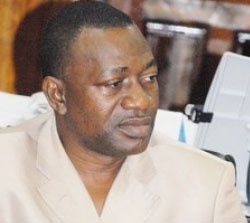
Local investors have had to play second-fiddle to their foreign counterparts in the financing of huge infrastructure projects under government’s Public Private Partnership programme.
This is attributable to the inability of local investors to mobilise the huge funds required for these big-ticket transactions.
Rashid Pelpuo, Minister of State responsible for government’s PPP initiatives, said in an interview that the PPP arrangement is generally accepted and welcomed “except that the huge capital requirements, for example, to construct a dual-carriage road between Accra and Kumasi or to widen the Tema Motorway and do overheads at each end demands lots of investment.
“So even though the local private sector has welcomed this idea, they are finding it difficult to mobilise resources to do it. What some of them are doing is partner some of the external private sector to come up with proposals to do some of these things.”
Conservative estimates indicate that the country’s huge infrastructure deficit requires sustained spending of at least US$1.5billion per annum over the next 10 years to address the shortfall.
The deficit covers all the main infrastructure areas: roads, energy, water, aviation, housing, and ICT.
To address these challenges, government proposed establishment of the Ghana Infrastructure Fund (GIF) to deal with the huge infrastructure deficit and to focus on strategic infrastructure that will lead to job-creation and increase growth of the economy.
Parliament last week passed the Ghana Infrastructure Investment Fund bill to give thrust to the idea. The law establishes the fund as a body corporate with the power to acquire and hold property.
Pressing projects that government seeks private investment for include construction of a dual Accra-Kumasi highway, the Cape Coast-Obuasi road, and Accra-Tema motorway.
Others include the construction of an inland port at Boankra in the Ashanti Region, and regional airports in five other regions.
Ongoing public-private projects include the 40-megawatt first phase of what will eventually be 200 megawatts of solar power capacity in the Northern Region. It is being undertaken by the Savannah Accelerated Development Authority (SADA) and DCH Solargiga, a subsidiary of China’s Solargiga.
The Ministry of Transport has also engaged the services of PricewaterhouseCoopers (PwC) to undertake a feasibility study on the Boankra project.
Mr. Pelpuo said: “We seek PPP in dualising the Accra-Kumasi road and tolling it. We seek PPP for the Cape Coast-Obuasi road; it’s a very heavy traffic area. We seek PPP in the construction of regional airports and in the railway sector, too. These are major areas that immediately we want to start having discussions on”.
With a population of just over 25 million, the country generates about 1,900 megawatts of electricity from hydro and thermal sources. However, a 10 percent year-on-year growing demand has created a sizeable power supply deficit that the government is desperate to fill.
Government has said it wants to achieve a 5,000-megawatt generation target by 2016 on the back of private investment in thermal power.